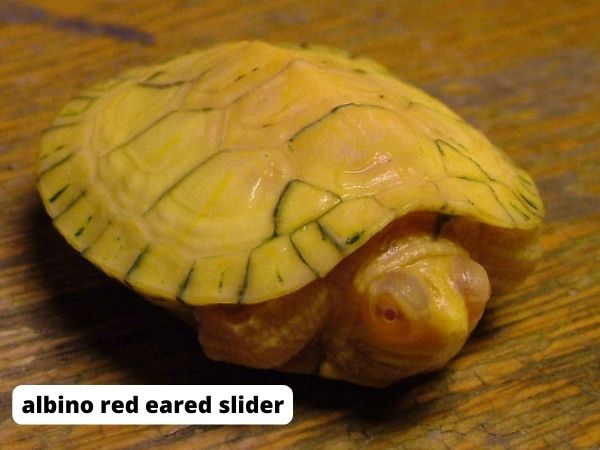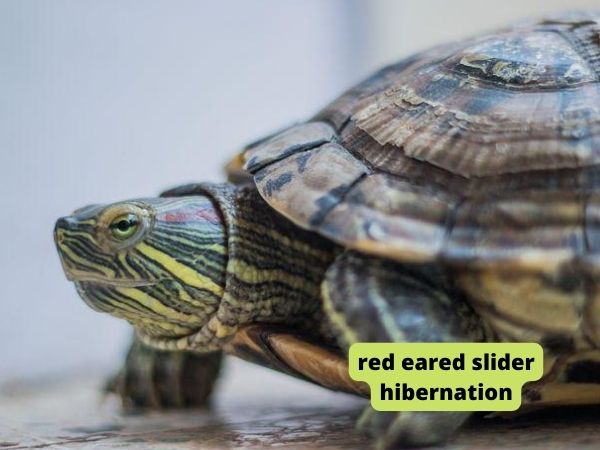Red-eared Slider Vs Other Turtle Species
Today we discuss Red-eared Slider Vs Other Turtle Species. If you’ve ever wondered how a red-eared slider stacks up against other turtle species, you’re in the right place! Today, we’ll dive into the fascinating world of turtles and compare our beloved red-eared slider with its fellow reptilian friends. From their habitats to their unique characteristics, get ready for an aquatic adventure like no other!
When it comes to turtles, the red-eared slider is a crowd favorite. With its vibrant red markings and friendly disposition, it’s hard not to be drawn to these delightful creatures. But how do they compare to other turtle species? Let’s find out as we explore their diverse lifestyles, physical features, and interesting behaviors.
Get ready to meet some incredible turtle contenders and discover what sets our red-eared slider apart from the rest. So grab your snorkel, put on your flippers, and join us on this thrilling journey into the world of red-eared sliders versus other turtle species. It’s going to be a shell of a time!
Red-eared Slider vs Other Turtle Species: A Comprehensive Comparison
Welcome to our in-depth exploration of the Red-eared Slider and how it stacks up against other turtle species. Turtles are fascinating creatures with a wide variety of characteristics, behaviors, and habitats. In this article, we will delve into the world of turtles and compare the Red-eared Slider to other popular species. From their appearances to their habitats and unique traits, we will explore what sets the Red-eared Slider apart from the rest.
The Red-eared Slider: An Overview
The Red-eared Slider (Trachemys scripta elegans) is one of the most well-known turtle species in the world. Its name comes from the distinctive red mark on each side of its head. Native to the Mississippi River Valley, the Red-eared Slider has become popular as both a pet and an exhibit animal in zoos and aquariums.
Known for their vibrant green shells and yellow stripes, Red-eared Sliders are medium-sized turtles with an average shell length of 8 to 12 inches. They have strong, webbed feet, which allow them to swim gracefully through the water. The Red-eared Slider’s diet consists of both plants and small aquatic animals, making them omnivorous. They are highly adaptable and can survive in a variety of habitats, including slow-moving rivers, ponds, and lakes.
Red-eared Sliders are also known for their basking behavior. They like to climb onto rocks, logs, or other elevated surfaces to soak up the sun’s warmth. This behavior helps regulate their body temperature and aids in digestion. In terms of longevity, Red-eared Sliders can live for several decades, with some individuals reaching over 40 years of age.
Comparing the Red-eared Slider to Other Turtle Species
1) Appearance and Physical Traits:
When it comes to appearance, the Red-eared Slider stands out with its vibrant green shell and red markings. However, other turtle species have their own unique characteristics. For example, the Painted Turtle (Chrysemys picta) has a beautifully patterned shell with colorful markings, while the Snapping Turtle (Chelydra serpentina) boasts a rugged appearance with a large head and long tail. The Box Turtle (Terrapene Carolina) has a box-like shell and intricate yellow and brown patterns.
Each turtle species has its own set of physical traits that help them adapt to their specific environments. From specialized beaks for feeding to strong limbs for swimming, the physical variations among turtle species are vast and fascinating.
2) Habitat and Range
The Red-eared Slider’s native range is primarily in the southern United States, but it has been introduced to various parts of the world due to its popularity as a pet. Other turtle species have different natural habitats and ranges. For instance, the Desert Tortoise (Gopherus agassizii) inhabits arid regions of the southwestern United States and Mexico, while the Matamata Turtle (Chelus fimbriatus) is found in the rivers and streams of South America.
Each turtle species has adapted to live in specific environments, whether it be freshwater, brackish water, or even deserts. Understanding these unique habitats and ranges is crucial for providing the proper care and conservation efforts for each species.
3) Behavior and Lifestyle:
Turtle species exhibit a wide range of behaviors and lifestyles. Red-eared Sliders are known for their basking behavior and their ability to spend long periods of time both in water and on land. Other turtle species have different behaviors and lifestyles. The Loggerhead Sea Turtle (Caretta caretta) spends most of its life in the ocean, only coming ashore to nest. The soft-shelled turtles (Family Trionychidae) are known for their elongated necks and leathery shells, and they are highly adapted for swimming and burrowing in sandy riverbeds.
Understanding the behavior and lifestyle of different turtle species is crucial for their care and conservation. It helps us create suitable habitats and provide the necessary enrichment to ensure their well-being and survival.
4) Diet and Feeding Habits:
Turtle species have diverse dietary needs and feeding habits. The Red-eared Slider is an omnivore, consuming both plants and small aquatic animals. Other turtle species have different preferences. The Green Sea Turtle (Chelonia mydas) mainly feeds on seagrasses and algae, while the Alligator Snapping Turtle (Macrochelys temminckii) is primarily a carnivore, relying on fish, frogs, and even small mammals for sustenance. The dietary differences among turtle species reflect their unique adaptations and ecological roles within their respective ecosystems.
Proper nutrition is essential for the health and well-being of turtles, both in captivity and in the wild. Knowing the specific dietary requirements of each species helps ensure they receive a balanced and appropriate diet.
5) Threats and Conservation Status:
Turtle species face various threats and challenges in the modern world. Habitat loss, pollution, climate change, and the pet trade are among the factors impacting their populations. Understanding the conservation status of different turtle species allows us to prioritize conservation efforts and implement effective strategies to protect them.
While the Red-eared Slider is listed as a species of Least Concern by the International Union for Conservation of Nature (IUCN), other turtle species may be endangered or critically endangered. For example, the Radiated Tortoise (Astrochelys radiata) and the Yangtze Giant Softshell Turtle (Rafetus swinhoei) are both critically endangered due to habitat destruction and overexploitation.
By raising awareness about the conservation status of turtle species and promoting responsible pet ownership, we can all contribute to the preservation of these remarkable creatures.
The Importance of Understanding Turtle Diversity
When comparing the Red-eared Slider to other turtle species, it becomes evident that each species has its own unique characteristics and adaptations. Understanding the diversity of turtle species is crucial for their conservation and well-being. By learning about their appearances, habitats, behaviors, diets, and conservation statuses, we can appreciate the rich tapestry of turtle life and work towards ensuring their longevity for future generations to enjoy.
Key Takeaways: Red-eared slider vs other turtle species
- Red-eared sliders are a popular pet turtle species due to their vibrant appearance and ease of care.
- Compared to other turtle species, red-eared sliders have a distinct red mark on each side of their head.
- Red-eared sliders are often more active and sociable compared to other turtle species.
- Some other turtle species, such as box turtles and painted turtles, have different dietary and habitat requirements.
- While red-eared sliders are commonly found in the wild, they can also adapt well to living in captivity.
Faqs for Red-eared Slider Vs Other Turtle Species:
The red-eared slider, scientifically known as Trachemys scripta elegans, is distinct from other turtle species in several ways. One of the most recognizable features is the red marking on each side of its head, which gives the species its name.
Furthermore, red-eared sliders have unique dietary needs. While they primarily eat aquatic vegetation and small invertebrates, other turtle species may have different feeding preferences. For instance, box turtles are omnivores and consume a variety of foods, including fruits, vegetables, and insects.
While it is possible for red-eared sliders to coexist with other turtle species, it is essential to consider a few factors. First and foremost, ensuring compatibility between different species is crucial. Some turtle species have different requirements for habitat, diet, and temperature, which may not align with the needs of a red-eared slider. Therefore, careful research and consideration are necessary before introducing different turtles into the same enclosure.
Moreover, it’s important to provide sufficient space and resources to accommodate multiple turtle species. Separate basking areas, hiding spots, and appropriate food options should be provided to ensure each turtle can thrive. Consulting with a reptile specialist or veterinarian experienced in turtle care can provide valuable guidance on successfully housing multiple turtle species together.
Red-eared sliders are indeed one of the most popular turtle species kept as pets. Their widespread popularity can be attributed to several factors. Firstly, they are relatively easy to care for, making them a suitable choice for novice reptile owners. Furthermore, red-eared sliders have distinct physical features, such as their vibrant coloration and the red mark on their head, which make them visually appealing to enthusiasts.
However, it’s important to note that popularity does not necessarily equate to the best pet choice for everyone. Different turtle species have varying requirements and temperaments. Therefore, it’s crucial to research and consider factors such as space, commitment, and the ability to meet the specific needs of the turtle species before bringing one home.
Red-eared sliders are known for their potential to grow relatively large compared to some other turtle species. As juveniles, they can measure around 1 to 2 inches, but as they reach adulthood, they can grow up to 12 to 15 inches in length. Their size can vary depending on several factors, including genetics, habitat conditions, and diet.
Comparatively, some turtle species may have smaller adult sizes. For example, musk turtles generally reach an adult size of 4 to 5 inches. It’s essential to consider the adult size of the turtle species you are interested in to ensure you can provide an appropriate habitat that allows the turtle to grow and thrive.
As pets, red-eared sliders do offer certain advantages over other turtle species. One of the key advantages is their relatively long lifespan, which can range from 20 to 40 years or even more with proper care. This makes red-eared sliders a long-term commitment and a companion that can be enjoyed for decades.
Yellow-bellied slider vs. red-eared slider (from “Lowcountry Turtles”)
Summary
So, to wrap it up, the red-eared slider turtle is quite unique compared to other turtle species. It has distinctive red markings on its head, and it is often kept as a pet because of its friendly nature. However, it can also outcompete other turtles and disrupt ecosystems when introduced in new environments. Additionally, red-eared sliders have specific needs for their habitat, such as UVB lighting and a combination of land and water areas. It’s important to carefully consider these factors before deciding to own one.



